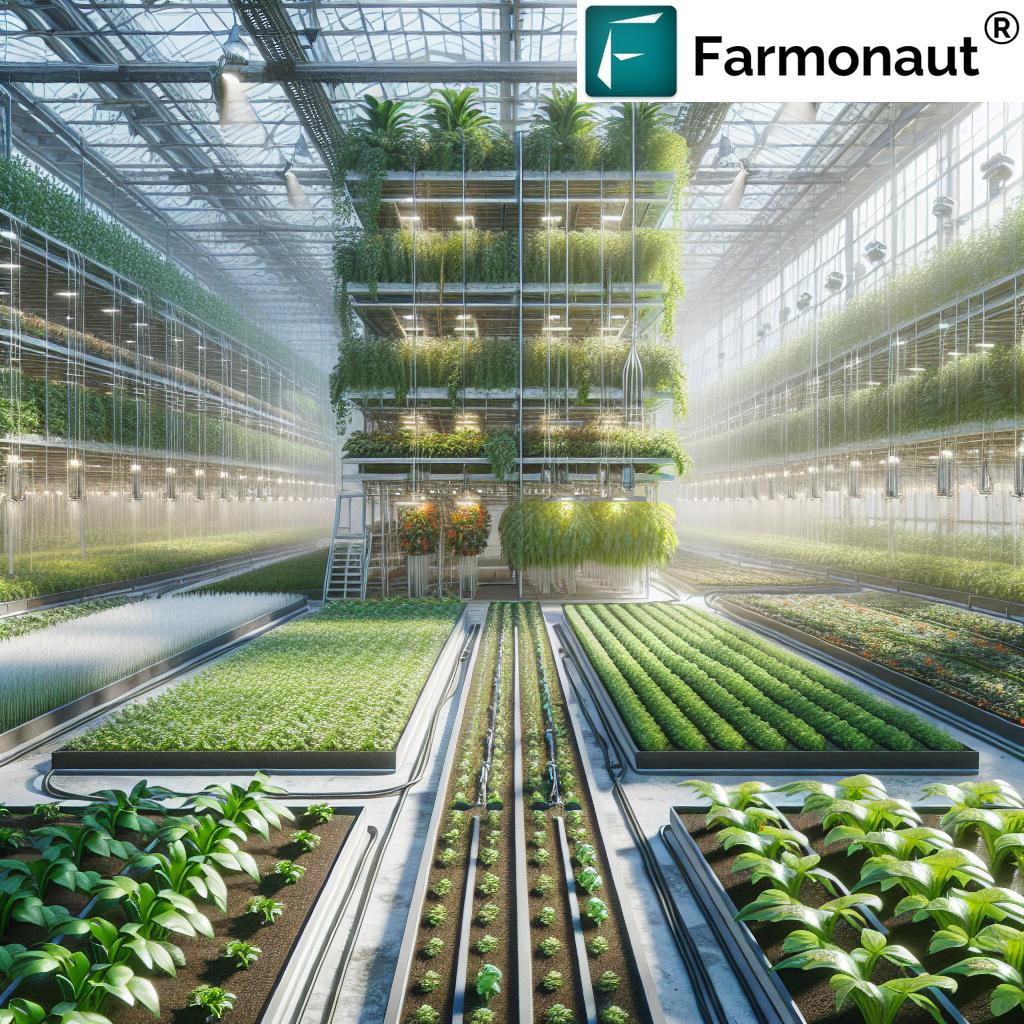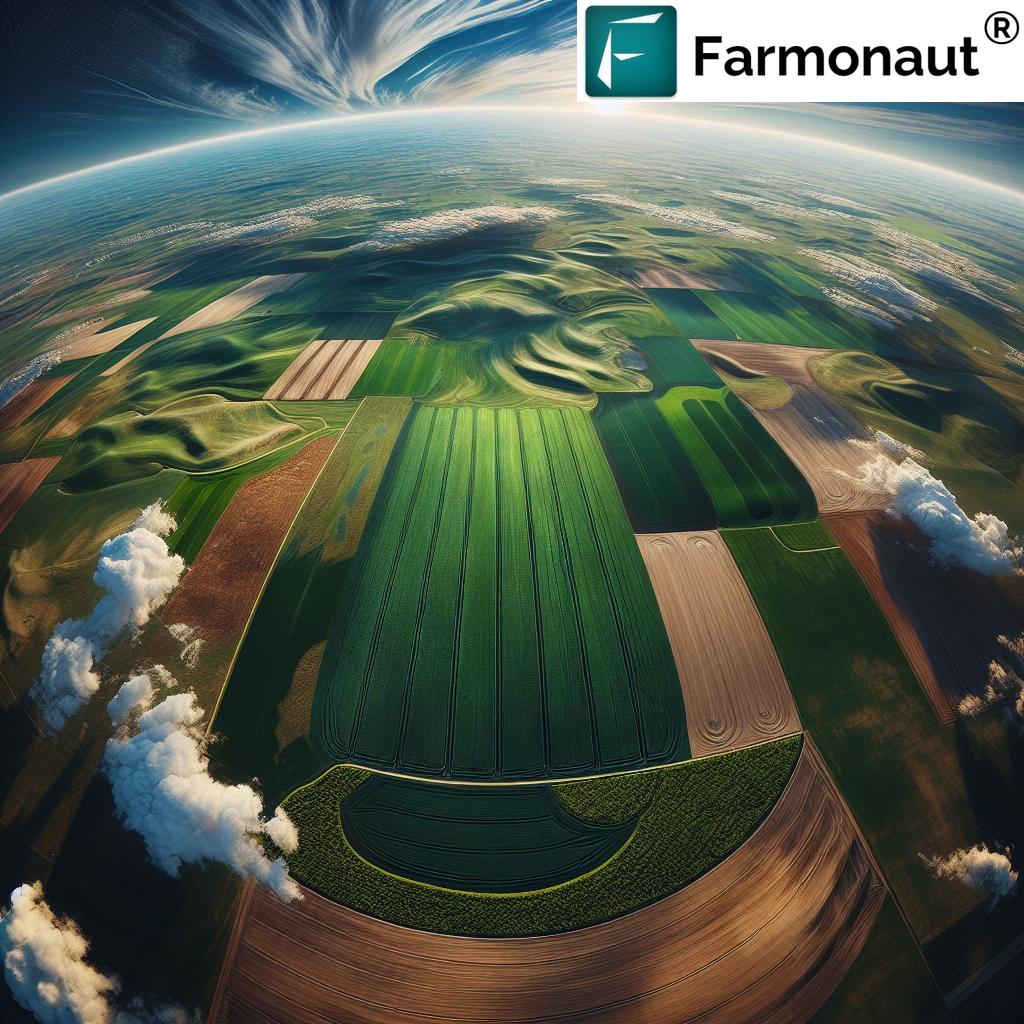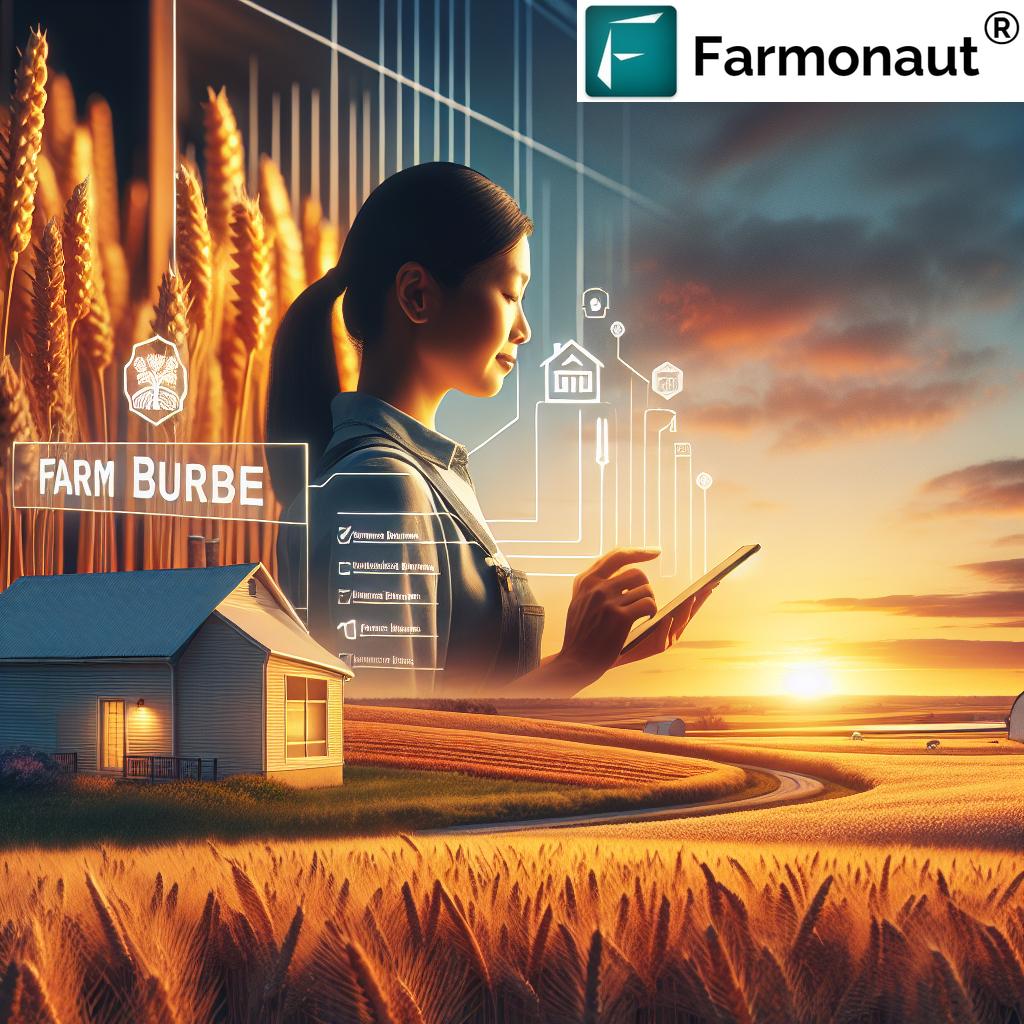Agriculture Investment: Top 7 US Farmland Secrets!
Introduction: The Rise of Agriculture Investment
Agricultural investment is becoming a cornerstone of modern wealth strategies, as more investors recognize its potential to provide resilient income, long-term capital appreciation, and environmental impact. As the global population is projected to surpass 9 billion by 2050, the increasing demand for sustainable food production presents unmatched opportunities in the agriculture sector. Our focus in this guide is on investing in farmland, exploring agri-tech innovations, and uncovering the best-kept secrets for securing sustainable, future-ready income.
“U.S. farmland values have increased by over 75% in the past decade, reflecting strong investor interest in sustainable agriculture.”
Agriculture Investment Opportunities – Types & Trends
Agricultural investments are not limited to owning farmland. Today, investors have multiple pathways to participate in and benefit from the dynamic world of sustainable agriculture. Let’s explore the top agriculture investment opportunities:
- Farmland Acquisition:
By purchasing agricultural land, we can earn income via direct crop production or leasing the land to farmers. Farmland stands among the most stable, appreciating tangible assets available in the United States investment landscape. - Agri-Tech Ventures:
Agri-tech innovations empower us to invest in startups driving the future of precision agriculture, automated irrigation systems, and data-enabled farm management. The integration of technology enhances crop yields while reducing costs and resource waste. - Sustainable & Organic Farming Investment:
Consumer demand favors food produced with organic and environmentally friendly practices. Sustainable agriculture and organic farming investment offer both ethical impact and market-driven growth potential. - Controlled-Environment Agriculture (CEA):
CEA systems—like greenhouses and vertical farms—allow us to pursue farmland investments in urban areas and climate-resilient farm models. The result? Higher efficiency, year-round production, and reduced volatility. - Agroforestry:
By integrating trees and shrubs into crop systems, agroforestry investments contribute to biodiversity, enhanced soil health, and carbon mitigation—delivering both economic returns and ecosystem benefits. - Farmland Investment Platforms:
Online platforms provide accessible routes for ownership and leasing options, removing the barriers of direct management and opening up farmland acquisition to more investors. - Commodities and Input Ventures:
Involvement in commodity trading or supporting businesses in the agriculture supply chain is another diversification path for agricultural assets.
Why Invest in US Farmland?
- Stable Appreciation: US farmland has consistently appreciated in value, proving resilient against economic cycles.
- Income Generation: High yields from crops as well as potential income from leasing offer multiple revenue streams for investors.
- Diversification: Investing in farmland provides diversification in our investment portfolio, often acting as an inflation hedge.
- Sustainable Impact: The United States is at the forefront of promoting sustainable agriculture and eco-friendly innovations, offering us opportunities to align values with growth.
- Food Security: A rising population ensures continued demand for locally grown products, underpinning strong market foundations.
Top 7 US Farmland Investment Secrets
Let’s dive into our meticulously researched list of the Top 7 US Farmland Secrets—key strategies, trends, and technologies that help us thrive as modern investors in agriculture:
1. Farmland Acquisition via Digital Platforms
- Digital farmland investment platforms allow us to own fractional shares in high-value farmland without direct operation. We can benefit from income and long-term value appreciation while automating management.
- Owning a share of diversified farmland mitigates risk, supports sustainability, and democratizes access to agricultural assets.
- Explore tailored options on platforms and review transparency, previous yields, and risk management protocols for sound investment decisions.
2. Agri-Tech Innovations for Enhanced Productivity
- Leveraging advanced technology—from satellite monitoring to artificial intelligence—empowers us to increase yields, reduce costs, and proactively manage risks across crops, water, and soil health.
- Farmonaut elevates this with real-time satellite imagery, AI-powered crop health diagnosis, blockchain traceability, and fleet management—revolutionizing sustainable farming for investors and farmers alike.
- Read more about Farmonaut’s Fleet & Resource Management Systems: Efficient Agribusiness Operations
3. Diversifying Investment Portfolio with Agriculture
- Balancing agricultural assets with traditional financial instruments insulates our portfolio from overall market volatility.
- We can diversify by combining acquisition of farmland, investing in agri-tech ventures, or adding exposure through REITs and farmland funds.
- Explore large-scale farm management solutions for consolidated operational oversight: Farmonaut Large Scale Farm Management.
4. Investing in Sustainable and Organic Farming
- Sustainable agriculture and organic farming investment bring us resilient returns driven by consumer demand for organic products and sustainable sourcing.
- Organic farms often command premium prices, and the improved soil and ecosystem resilience may increase yields in the long run.
- Farmonaut’s real-time crop health monitoring tools boost our ability to manage organic farming’s unique requirements.
5. Controlled-Environment Agriculture (CEA) for Higher Yields
- CEA systems control climate, water, and nutrients, resulting in high productivity per acre and year-round harvests, regardless of environmental volatility.
- Investing in CEA provides a path for sustainable, low-footprint production—particularly impactful in water-scarce or urban areas.
- Monitor and optimize performance with Farmonaut’s advanced resource management APIs: Farmonaut Satellite-Weather API and Developer Docs.
6. Agroforestry for Multifaceted Returns
- Agroforestry investments incorporate trees and perennial species to provide diversified revenue—timber, nuts, berries, and even carbon credits—while improving biodiversity.
- These systems increase soil health, mitigate erosion, and contribute to climate change mitigation efforts.
- Discover how Farmonaut’s Carbon Footprinting Solutions enable you to track and offset your agriculture-related emissions.
7. Leveraging Traceability and Smart Financing
- Ensuring product integrity is crucial, especially in organic and specialty crops. Farmonaut’s Blockchain Traceability Solutions let us track produce from field to consumer, bolstering reputation and transparency.
- Access to reliable agriculture financing is another secret; precision monitoring supports accurate crop loan approvals and insurance. Consider Farmonaut’s Crop Loan & Insurance Solutions for smarter farm funding.
How Tech & Sustainability Drive Agriculture Investment
As stewards of sustainable agriculture, we must harness solutions that drive efficiency, profitability, and ecosystem health. Farmonaut stands at this frontier by providing:
- Satellite-Based Crop Health Monitoring for timely responses to changes in vegetation, soil moisture, and plant health.
- AI-Powered Advisory for instant, field-specific recommendations—improving yields and resource utilization.
- Blockchain Traceability to maintain consumer trust and meet stringent organic certification standards.
- Fleet & Resource Management tools to reduce logistics costs and maximize equipment efficiency.
- Carbon Footprinting capabilities to measure and minimize the environmental impact of our land use and farming operations.
Farmonaut’s subscription-based access model makes precision agriculture affordable and scalable for everyone—from smallholders to enterprise-level investors. Explore our suite of Farmonaut Mobile & Web Apps to unlock actionable, data-driven insights today!
Comparative Analysis Table of Sustainable Farmland Investment Strategies
Note: Data is indicative and may differ based on location, management expertise, and external factors.
Key Benefits of Agricultural Investments
- Portfolio Diversification: Farmland’s low correlation with traditional market assets shields us from volatility.
- Consistent Income Generation: Sale of crops and products, coupled with leasing, create resilient revenue opportunities.
- Appreciation & Inflation Hedge: Land value historically rises over the years, protecting wealth against inflation.
- Positive Environmental & Social Impact: Investing in sustainable practices improves rural development, biodiversity, and climate mitigation.
- Food Security: Our investment directly supports the supply of food to a growing population, strengthening economic development and future-proofing our strategy.
- Access to Financial Innovations: Services like Farmonaut’s enable precision farming even at scale, improving access to loans, insurance, and operational efficiency.
Challenges & Risks in Agricultural Investments
- Market Volatility: Commodity prices and yields can be unpredictable due to weather, global demand shifts, and external shocks.
- Regulatory Risks: Land use, environmental regulations, and shifting trade policies may impact profitability in some areas.
- Operational Risks: Lack of on-ground expertise or inadequate management systems can affect farm results.
- Environmental Impacts: Without sustainable practices, land may face soil degradation, water scarcity, or pollutant build-up, reducing productivity over time.
- Technological Complexity: Advanced systems like remote sensing require learning and adaptation but can be streamlined through platforms like Farmonaut.
“Sustainable farming practices can boost soil health, increasing crop yields by up to 20% while reducing environmental impact.”
Future Trends: Innovation & Initiatives in Agriculture Investment
As investors in sustainable agriculture, we are witnessing regulatory bodies, governments, and organizations increasing commitment to global food security and environmental stewardship.
- Global Funding Growth: Major institutions plan rising investment in agricultural development, including billions in annual funding for sustainable, water-wise, and high-yield techniques.
- Climate Initiatives: Programs are scaling up support for climate-resilient farming through sustainable practices, agri-tech solutions, and research.
- Technology Integration: The integration of remote sensing, AI, advanced irrigation, and blockchain is setting new standards in yield optimization and resource tracing.
- Consumer-Driven Change: Rising demand for traceable, organic products is pressuring the supply chain to adopt sustainable sourcing and digital visibility solutions.
To position ourselves for long-term growth, we recommend regular review of market trends, regulatory updates, and committing to ongoing education in sustainable agriculture innovations.
Farmonaut Subscription Plans
Looking to maximize your farmland’s potential? Farmonaut offers flexible, scalable subscription options tailored for farmers, agribusinesses, and land investors—empowering you with AI insights, satellite monitoring, and resource management. Choose the plan that suits your scale and budget:
FAQ: Agriculture Investment & Sustainable Farming
What is the best way to start investing in farmland?
We recommend beginning with reputable farmland investment platforms for fractional ownership or managed funds, which provide risk diversification and professional management. For hands-on approaches, evaluate parcels based on location, water access, soil quality, and proximity to market; consider leveraging Farmonaut’s monitoring tools.
How do agri-tech innovations reduce investment risk?
Agri-tech innovations like satellite monitoring and AI-driven advisory help us detect crop stress, manage irrigation efficiently, and anticipate weather/nutrient variations. This minimizes yield risk, input costs, and heightens return consistency for our investments.
Is sustainable agriculture more profitable in the long term?
Yes. Sustainable farming practices such as organic systems, precision irrigation, and biodiverse cropping improve soil health and yields, reduce operating costs, and access premium markets. This can deliver competitive—and often superior—long-term returns alongside positive environmental impact.
Can I track my farm’s environmental and financial performance?
Absolutely! Platforms like Farmonaut provide real-time insights on soil health, water utilization, crop condition, and carbon footprinting—helping us optimize management and document sustainability progress for both reports and potential buyers.
How do I ensure traceability for my agricultural products?
By implementing blockchain-powered traceability systems, such as Farmonaut’s Blockchain Traceability Solution, we can track every stage of the farming and distribution process—building trust with consumers and complying with market regulations.
Are there Farmonaut solutions for plantation, forestry, and advisory?
Yes. Farmonaut’s Crop, Plantation & Forest Advisory services (try here) provide advanced monitoring and management for forestry and plantation environments, improving yields and sustainability outcomes across diverse agricultural industries.
Conclusion: Sustainable Agriculture Investment for a Greener Tomorrow
As demand for food, fiber, and eco-friendly products rises, agricultural investments stand as a powerful tool for wealth creation—anchored by the dual pillars of financial resilience and environmental stewardship. By harnessing the latest innovations in precision farming, committing to sustainable practices, and leveraging data-driven platforms like Farmonaut, we can build diversified portfolios that deliver meaningful returns while advancing the cause of a greener, more secure planet.
Let’s take the next step toward responsible prosperity—because in sustainable agriculture, every investment is a seed for a brighter future.















